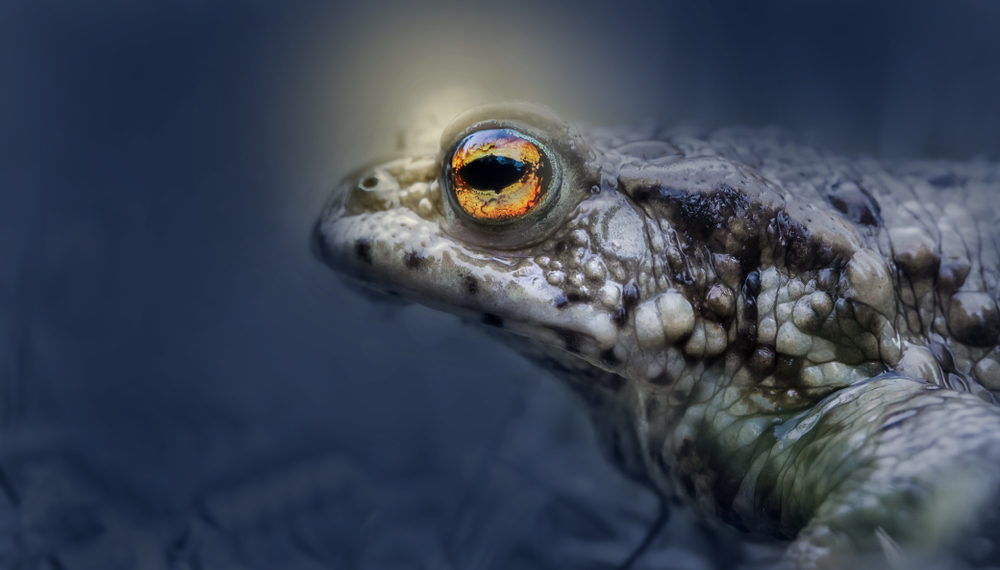Bioluminescence is one of the most beautiful natural phenomena in the world. It is the production of light by a living organism. For years it has been understood that many animals are able to create this bioluminescence and emit this blue light. Biofluorescence is a different but equally amazing phenomenon where some organisms emit light from their body due to a chemical reaction.
Coral, jellyfish, reef fish, sharks have all been found to be biofluorescent but recent discoveries are showing that many more animals may have this trait. In a recent study, it was found that many amphibians may now have this biofluorescent ability. To date, these amphibians colorful abilities were going unnoticed because there are not many blue lights in nature. Humans need blue light to be able to see the biofluorescence. When researchers took a blue light and tested it on salamanders, frogs, and caecilians every animal tested, lit up in some way.
Some had colorful spots, others had incredible stripes. For some it was just their digits, for others, it was their bones. The majority glowed bright green but some showed as yellow or orange. In those that different have patterns on the outside of their body, their organs shone like a flashlight inside them.
One question researchers had is why would they shine like this. While our eyes are not able to see the different colors, many other animals would be able to see them. It may be used to communicate, to warn of predators, or to highlight your position to other members of the species.
While this may sound like it could be useful for little other than playing games with amphibians the potential use cases are significant. When it was discovered that jellyfish produced a biofluorescent protein it was awarded a Nobel Prize because it was so significant. The light-producing protein that was found back then, by Osamu Shimomura, was different from many other proteins previously found. The protein that he discovered glowed a bright green simply when UV light was shined on it without the need for other chemicals. Scientists were able to use the gene that produced this green fluorescent protein to be part of DNA and other organisms. This allowed these fluorescent particles to be attached to other proteins. While this may sound simple it transformed protein science. Now biologists were able to track the interactions of specific proteins easily under a microscope. The green protein acted like a signal flashing beacon. As an interesting side note, the discoverer of that incredible piece of protein was also there and watched when the atomic bomb was dropped on Nagasaki. The scientist was a young boy at the time and had to have a bath to wash off black rain that fell after the explosion. Who knows, this disaster may have actually led to his interest in chemistry.
Whether these new protein discoveries will have as profound an effect on the world, remains to be seen. At the very least, as the amphibian population continues to decline worldwide, this new revelation will make them much easier to find in their natural habitat. What was once a needle in a haystack operation has now become as simple as shining a blue light in environments to enable sightings of a wide range of amphibians.
The discovery highlights how much we still have to learn about the natural world. We often look at this planet and everything it holds through our own eyes. We fail to realize that there are many things that at present we can simply not comprehend. The discovery will be incredibly useful in the field of biology but it is also a great lesson to us all to think outside the box.




